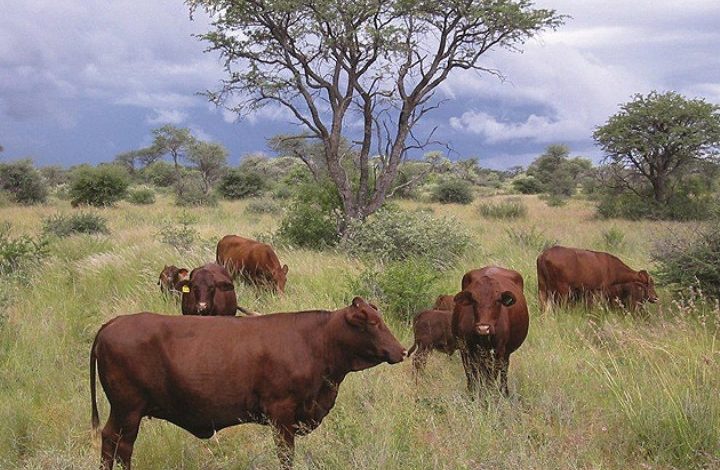
At a far-flung village in Oshana region in northern Namibia, Paulus Nuyoma herded his eight cattle to a water pond.
“One, two, three…eight cattle are what I was left with after my livestock perished due to a dry spell. Not only is that, but looking on, this is the healthiest the cattle have looked in four years,” he said on Friday.
The healthy status of the farmer’s livestock is attributed to the improved grazing situation in Namibia following significant rainfall after years of persistent dry spell.
The northern part of the country received regular to above-normal rainfall between December 2019 and early 2020, which resulted in improved grazing and water availability to the relief of farmers.
“At least I am left with something. Some farmers’ cattle perished due to drought- all of them,” he said.
The persistent drought loomed into 2016, seen as the worst in more than 30 years in the country. Namibian president in May 2019 declared the drought a State of Emergency.
Nuyoma, who lost more than 13 cattle due to drought, said that he is pleased with the recovery of his livestock.
“The grazing is adequate and water readily available following good rainfall received,” Nuyoma said Friday.
Many farmers like Nuyoma are embracing the improved grazing on many fronts.
Along with the good health of animals, the well-being of the farmers has also since been enriched.
“My psychological state has shifted drastically. I am no longer stressed and aggrieved as I used to be during the time of drought. I am happy to see good progress on the farm,” he said.
He is not the only one. Leo Mateus, a cattle herder in the northern Oshikoto region, said that the herding dynamics are better following good rains.
During the dry spell, patterns of herding cattle were characterized by the lifting of cattle to help them with mobility, and slaughtering cattle that succumbed to the drought situation as well as the long walks in order to seek grazing and water.
“It was difficult and thwarting. The grazing areas were also crowded. But now we are back to the traditional ways on grooming the animals to betterment,” Mateus said.
Moreover, the farmers no longer have to cover long distances or worry about the emotional strain of witnessing cattle succumb as well as financial losses incurred, according to the farmers.
In the meantime, the farmers hope to capitalize from healthier livestock.
“I have more negotiating power now. The prices on communal level improved,” added Nuyoma.
Meanwhile, Namibia National Farmers Union leader, Jason Emvula said that the drought over the years nearly paralyzed the agricultural sector, farming activities.
“But with improved grazing, we expected a recovery. But for all to flourish, we will have to make sure we put the farmer at the forefront,” he said.
According to Emvula, this would be done through capacity building and improved access to the market.
“However, this would be a challenge due to COVID-19 pandemic, which resulted in the closure of certain facilities including border for the export of weaners,” he said.
But the farmers are set to find respite in the central government’s agricultural programme. The Ministry of Agriculture, Water and Land Reform is working on the livestock restocking scheme.
Carl Schlettwein, Agriculture Minister, said that the scheme is aimed at helping farmers recover from drought effects. Amongst others, under the scheme, subsidies are provided to livestock producers procuring breeding stock. The programme is set to benefit 14,805 cattle producers.
“The rationale for this scheme is the heavy losses suffered by the livestock sub-sector that was severely affected by the 2018/2019 drought resulting into a total loss of 97,854 livestock, inclusive of 57,937 cattle; 27,876 goats; 10,936 sheep; 762 donkeys and 343 horses,” Schlettwein said. Enditem







